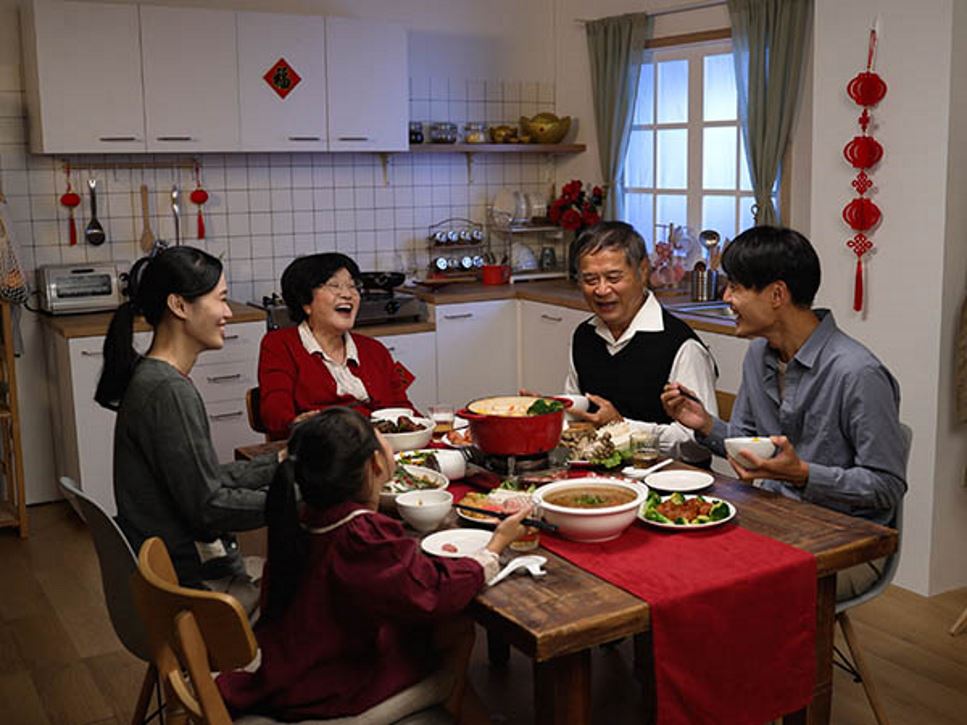Lunar New Year, also known as Chinese New Year or Spring Festival, is celebrated across China and many East Asian countries, as well as in the United States. The lunar calendar determines the date of the Lunar New Year, with the first day aligning with the new moon that appears between January 21 and February 20.
The festival's history can be traced back 3,500 years and is thought to have originated in the Shang Dynasty, but customs and traditions have since evolved. The tale is that the Chinese New Year stemmed from an ancient battle against a mythical beast, Nian. To scare away the beast and prevent destruction, people displayed red paper, lit firecrackers and wore red clothing. These traditions continue today.
Food Traditions
The 15 days of Lunar New Year festivities are meant to be celebrated with loved ones. Food plays a significant role, with families thoughtfully creating menus and selecting dishes that will provide blessings in the new year.
Symbolic foods commonly eaten include:
- Dumplings that resemble the shape of ancient money to represent wealth
- Nian gao (glutinous rice cakes) for hope that the new year will be better than those past
- Sweet rice balls symbolize family togetherness and unity
- Spring rolls that look like bars of gold to symbolize wealth
- Noodles for happiness and a long life — the longer the noodles, the better
- Steamed whole fish represents excess and prosperity
- Steamed whole chicken represents family reunion and life coming full circle
- Vegetables including bamboo shoots for a long life; poria mushrooms for blessings and good fortune; and seaweed for affluence and prosperity
- Fruits including muskmelon and grapefruit to represent family and hope; tangerines and oranges for good luck
Non-food Traditions
Regional customs and traditions vary but follow the same overarching theme — saying goodbye to the old and welcoming a lucky and prosperous new year.
While food plays a large role, other activities include:
- Cleaning the home thoroughly before the festival to sweep away bad luck from last year and prepare the home for good luck in the new year
- Decorating with red, a color that signifies good luck and happiness
- Offering sacrifices to ancestors and honoring them with a place setting at the dinner table
- Giving red envelopes filled with money and other gifts to children — and sometimes other family members who might be facing difficulties, such as unemployment — to ward off Nian and for good luck in the new year
- Firecrackers and fireworks to scare away evil and welcome the new year
- Watching lion and dragon dances to bring prosperity and good luck
- Wear red undergarments every day of the year to ward off evil spirits and bad fortune
Chinese Zodiac
The Chinese zodiac is a repeating cycle of 12 years. Each year is represented by an animal and its characteristics.
In order, these are the zodiac animals and their purported personality traits:
- Rat: quick-witted, resourceful, financially fit and organized
- Ox: dependable, hard-working, strong, patient
- Tiger: brave, confident, independent
- Rabbit: quiet, gentle, responsible, elegant
- Dragon: confident, intelligent, adventurous, enthusiastic
- Snake: determined, intelligent, wise
- Horse: positive, active, energetic
- Goat: calm, kind, sympathetic
- Monkey: smart, curious, determined, sharp
- Rooster: observant, creative, courageous
- Dog: loyal, honest, prudent
- Pig: logical, generous, diligent
According to Wake Forest University’s Timothy S. Y. Lam Museum of Anthropology, the zodiac has a rich history and is still looked upon in everyday life — it is used to determine your fortune, marriage and career decisions, fortune-telling and more. Don't assume that your zodiac year will be your lucky year. In fact, the opposite is believed to be true — it is seen as a hurdle to jump over.
Find a Nutrition Expert
Looking for credible nutrition information and recommendations? The Academy of Nutrition and Dietetics' network of credentialed food and nutrition practitioners are ready to help!

